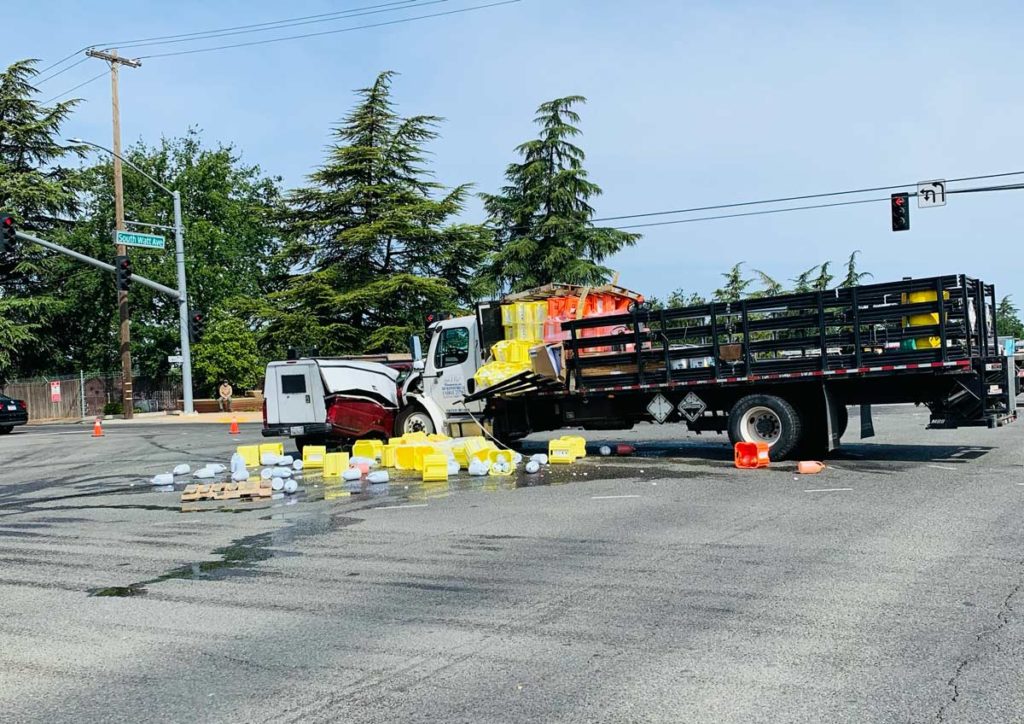The Sacramento Metropolitan Fire District, better known as Metro Fire, serves 358 square miles and a population north of 738,000. When you add in an agreement with the Sacramento County Environment Management Department, Metro Fire’s Hazardous Materials Response Team covers the entire 995 square miles of Sacramento County and its 1.5 million residents, including the cities of Citrus Heights, Elk Grove, Folsom, Galt, Iselton and Rancho Cordova.
That’s a lot of backyard to play in.
The team is housed at Station 109 in Carmichael and keeps seven members on staff each day. But that’s just the surface.
The HMRT has 55 hazardous materials specialists across three platoons working a 48/96 schedule, with an additional 45 members trained to the specialist level, but not currently assigned to the HMRT. The additional members are available to assist based on incident needs. This model allows them to staff entry back-up teams, decontamination, and most command and support positions as needed.
The team began in 2002 when the fire chief directed Metro Fire’s Special Operations Division to develop a hazardous materials response team. After a year of extensive planning, research and training, the team was officially formed in 2003.
Today, Metro Fire’s Special Operations program includes air operations, aircraft rescue and fire fighting, a community emergency response team, dozer operations, foam operations, tactical emergency medical services, technical and water rescue, and unmanned aerial vehicles.
Because of the team’s unique staffing and apparatus configuration, it can easily transition from a structure fire, medical aid, or technical or water rescue to hazardous materials incident without the need to return to the firehouse to retrieve auxiliary apparatus, personnel or equipment. This all-risk model requires a dedicated team of highly trained and proficient members.
Training at Metro Fire happens daily. Due to the highly technical and complex nature of hazardous materials response, staying current on response regulations, chemical and physical properties, equipment operation and skills competencies is a must. Daily training is supplemented with quarterly and annual refresher drills.

The HMRT is equipped to respond to hazardous materials incidents involving known and unknown substances, as well as weapons of mass destruction. As a certified Type I HMRT by the California Governor’s Office of Emergency Services, the team can respond to incidents throughout California. In California, certification to the Hazardous Materials Specialist level requires 240 hours of initial training delivered over six weeks.
Metro Fire is one of three agencies in the Sacramento region with Type I HMRTs. Information sharing and coordination amongst the teams is essential. And training is not limited to fire service agencies. Metro Fire’s HMRT routinely trains with private facilities and hazardous materials transportation providers, as well as local law enforcement agencies and assets from CalOES, the Federal Bureau of Investigation and the California National Guard’s 95th Civil Support Team.
To supplement regular training, the HMRT program manager publishes a monthly newsletter covering such topics as chemistry, incident response reviews, training opportunities and other topics relevant to the program.
HMRT’s biggest win centers around the cohesive relationship between its administration and labor union, IAFF Local 522. This association has benefited the team greatly by providing the support and resources necessary to ensure our members are trained and equipped to best serve our community.
Like so many teams across the nation, the biggest challenge for Metro Fire’s HMRT is obtaining funding and resources for training and equipment. They find themselves continuously inventing new ways to keep members up to date with the latest technological and emergency response trends and developments. They also regularly pursue grant funding to bolster the expansive equipment cache and replace outdated equipment with newer technology to better serve our community.
Being a big dog takes a lot of work, because there’s a lot of yard to cover.








